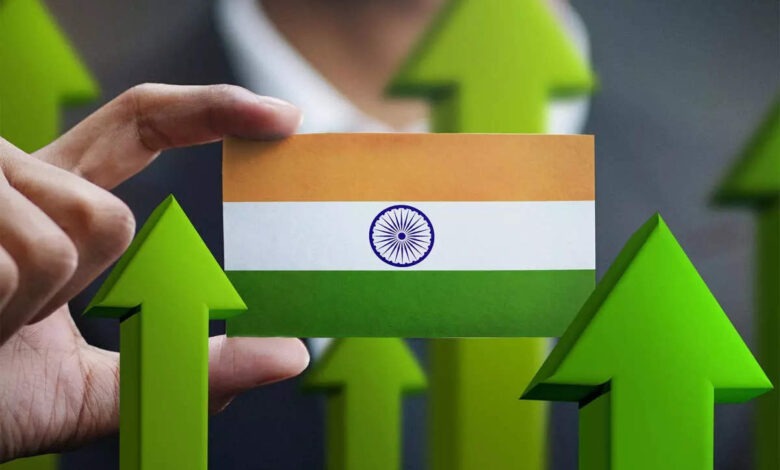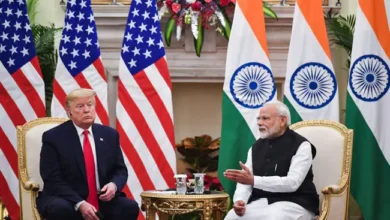India’s trade with regional groupings grows robust

India’s has a trade surplus with 8 regions and regional groupings in the post pandemic years as compared with 6 regions and regional groupings in the pre pandemic years.
India’s exports performance has been significantly resilient in the post pandemic years as the country’s exports make new highs everyyear, the exports trajectory expanded from USD 497 billion in 2020-21 to USD 676 billion in 2021-22, USD 776 billion in 2022-23 and USD 778 billion in 2023-24. India has registered a positive exports growth in 17 out of 19 regions andregional groupings in post pandemic years.
India’s trade balance has been in surplus with 8 regions and regional groupings including North America, South Asia, European Countries (EU), Other European Countries, East Africa, North Africa and Central Africa in the post pandemic period.
Notably, regions such as European Countries and Central Asian countries have transitioned from a trade deficit in pre-Pandemic years to a trade surplus in the post pandemic years, highlighting India’s potential to become an export hub in the coming times. India’s trade surplus also increased with regions including North America, Other European Countries, South Asia, North Africa, and East Africa.
The proactive and effective measures and policy reforms undertaken by the government including the improvement in logistics, massive investments in exports infrastructure, simplification of indirect tax regime, single window clearances, lesser human interface, have significantly enhanced the ease ofexports from the country.
India’s exports to the Southern African Customs Union (SACU) has surged from an average growth of 5% in the pre pandemic years to 32% in the post pandemic years due to strong exports growth withNamibia and South Africa. India’s exports increased to East Africa at 27% due to increased exports toSeychelles and Tanzania rep, exports to North African region grew from 8% to 17% and West Africa from 13% to 16% from the pre to post pandemic years.
India’s exports growth patterns in Pre (FY 2018-2020) and Post-Pandemic (FY 2022-2024) years
|
S. No. |
Regions and Regional Groupings |
Pre-Pandemic Average export growth (%) |
Post-Pandemic Average export growth (%) |
|
1 |
Southern African Customs Union (SACU) |
5 |
32 |
|
2 |
East Asia (Oceania) |
2 |
30 |
|
3 |
West Asia- GCC |
-1 |
28 |
|
4 |
East Africa |
0 |
27 |
|
5 |
EU Countries |
5 |
25 |
|
6 |
Other European Countries |
2 |
22 |
|
7 |
Other West Asia |
11 |
22 |
|
8 |
Other South African Countries |
26 |
20 |
|
9 |
North Africa |
8 |
17 |
|
10 |
North America |
8 |
16 |
|
11 |
Latin America |
12 |
16 |
|
12 |
West Africa |
13 |
16 |
|
13 |
Other CIS Countries |
15 |
14 |
|
14 |
ASEAN |
1 |
11 |
|
15 |
South Asia |
6 |
9 |
|
16 |
European Free Trade Association (EFTA) |
10 |
7 |
|
17 |
CARs Countries |
12 |
6 |
|
18 |
Central Africa |
12 |
-1 |
|
19 |
North East Asia |
4 |
-2 |
|
|
Average |
8 |
17 |
Source: Compiled from Ministry of Commerce and Industry, Government of India
India’s exports to West Asia GCC witnessed a substantial growth shifting from a negative growth of -1% in the pre pandemic to a double digit growth of 28% in the post-pandemic years due to strong export growth with Kuwait, Saudi Arab and U Arab Emtsduring the post pandemic years, followed by the increase in exports to East Asia (Oceania) from an average growth of 2% in pre pandemic to 30% in the post pandemic years due to more than 100% growth of exports to Australia.
The exports to other West Asia also grew from an average growth of 11% in prep pandemic years to 22% in the post pandemic years. Exports to ASEAN also increased from an average growth of 1% in pre pandemic years to 11% in post pandemic years. Exports to South Asia also grew from an average growth of 6% in pre pandemic years to 9% in the post pandemic years.
India’s exports growth in Pre (FY 2018-2020) and Post-Pandemic (FY 2022-2024) years
India’s exports to North America increased from an average growth of 8% in pre pandemic to 16% in the post pandemic years and exports to Latin America increased from an average growth of 12% to 16% from pre-pandemic to post-pandemic years. Exports towards other European countries increased from an average growth of 2% in pre pandemic to 22% in the post pandemic years and export growth to EU increased from 5% in pre-pandemic to double digit growth of 25% in post-pandemic years.
In conclusions, India is improving significantly its foreign trade trajectory with many regions with its strengthened global supply chains. With an aim to boost India’s export performance, a dynamic and responsive Foreign Trade Policy 2023 has been launched on 31stMarch 2023. The policy aims to meet the emerging trade scenario by taking advantage of India’s federal system. The new Foreign Trade Policy (FTP) 2023 with its five key elements of Duration, Dynamism, Decentralization, Direction and Disaster proofing, is aimed at creating an enabling ecosystem for exporters.
The FTP 2023 aims at collectively increasing India’s competitiveness in the global markets by promoting and developing each state to be able to integrate with the global trade which is a move in line with India’s vision of becoming “Atmanirbhar” (self-reliant).
With the effective and meaningful policy environment at place, India’s trade deficit istransforming to trade surplus with many countries and the countries where India is already in surplus, the degree of surplus is also increasing. The impact of economic reforms undertaken by the government during the last many years has strengthened India’s position in global trade and investments trajectory.













